The SilverStone Strider Platinum 550W PSU Review
by E. Fylladitakis on April 8, 2016 8:00 AM EST- Posted in
- PSUs
- Cases/Cooling/PSUs
- 550W
- SilverStone
- 80Plus Platinum
External Appearance
Strictly speaking, the external design of the Strider Platinum is unsophisticated. SilverStone went with a minimalistic design, steering away from fancy side stickers and eye-catching colors. The chassis of the PSU is sprayed with a satin black paint, which is excellently applied and highly resistant to smears and fingerprint marks. Due to its reduced length, SilverStone is forced to use a 120 mm cooling fan that is placed offset towards the left side of the unit.
SilverStone placed the sticker with the electrical specifications and certifications of the PSU on the left side of the chassis, making it visible from a windowed side panel if the PSU is installed with its fan facing downwards. The right side of the chassis is entirely plain. SilverStone engraved their company logo on the top side of the chassis, but the engraving is very subtle and most likely will not be easily visible inside a case, even if there is strong illumination.
The rear of the Strider Platinum is very simple, with only the AC cable receptacle and a small on/off switch to be found. Nine connectors for the eight modular cables can be found at the front side of the PSU. The blue connectors are for PCI Express cables and SilverStone is using them to differentiate from the similar CPU EPS connector, which is black. The connectors are keyed, meaning that you cannot really push a PCI Express cable into the EPS connector and vice versa, unless a lot of force becomes involved. Finally, sole 4-pin connector is not a power connector at all, but rather is the connector for the PSU's voltage sense feature, which allows the PSU to monitor the voltages on the 24-pin ATX cable and is supposed to improve the power quality of the PSU.
Internal Design
Globe supplies the 120 mm fan for the cooling needs of the PSU. The 120 mm fan is a high quality model with an FDB (fluid dynamic bearing) engine and, with a maximum speed of just 2000 RPM, actually is the least powerful between Globe’s similar offerings, hinting that SilverStone has great faith on the efficiency of their product.
The OEM behind the creation of the Strider Platinum is Sirfa, with the PSU based on an upgraded version of the Astro Lite HPM platform. It is not a complex design and Sirfa originally used it to achieve 80Plus Gold efficiency, but apparently SilverStone managed to squeeze even better performance out of it. The input filtering stage consists of four Y capacitors, two X capacitors, two filtering inductors and one surge-suppressing MOV, ending to a single input conversion bridge that can be seen on its own small heatsink. The passive APFC components are a 400V/390μF capacitor supplied by Nippon Chemi-Con and a shielded inductor. The primary inversion stage is a half-bridge design and the main transformer has a single 12V output.
On the secondary, the DC to DC conversion circuits used to generate the minor voltage lines can be seen on their own vertical PCB. Thick wires are being used to connect the main PCB with the connector’s PCB, creating a little bit of a mess. Nippon Chemi-Con supplies all of the electrolytic and a couple of the polymer capacitors, with the rest of the polymer capacitors coming from Teapo. One thing of note is that three temperature sensors can be seen attached on the secondary side heatsink, which is inexplicable for a PSU without exotic functions, as the designer could probably pull off all of the functions of the Strider Platinum by using just one.


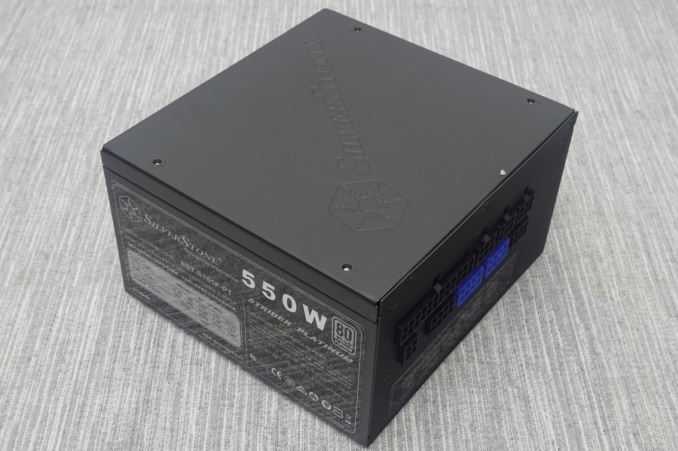
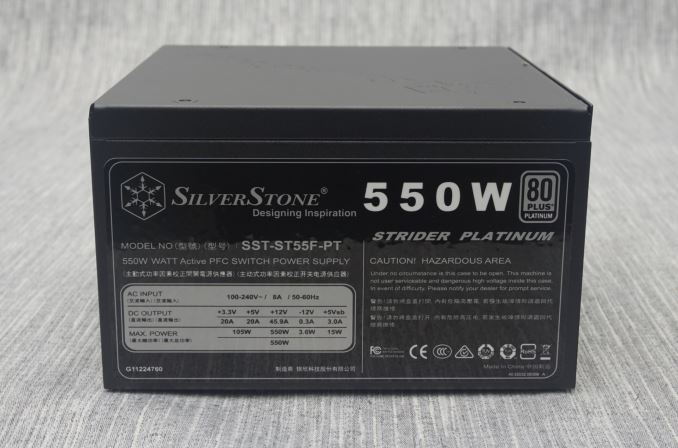
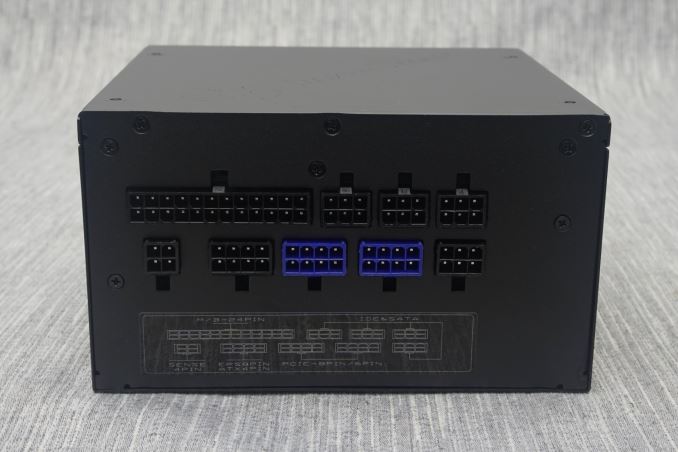
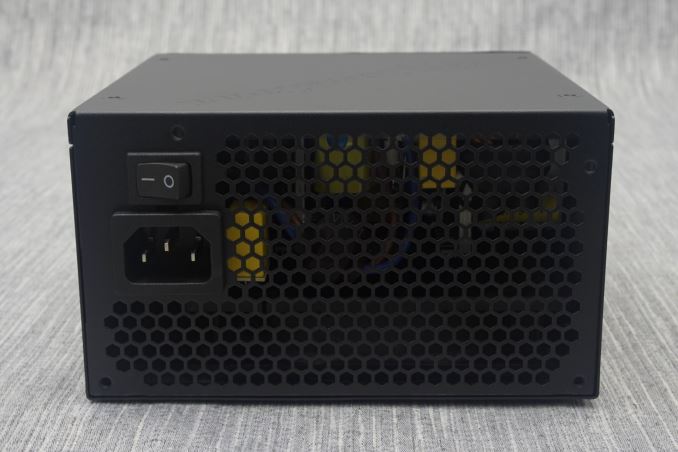
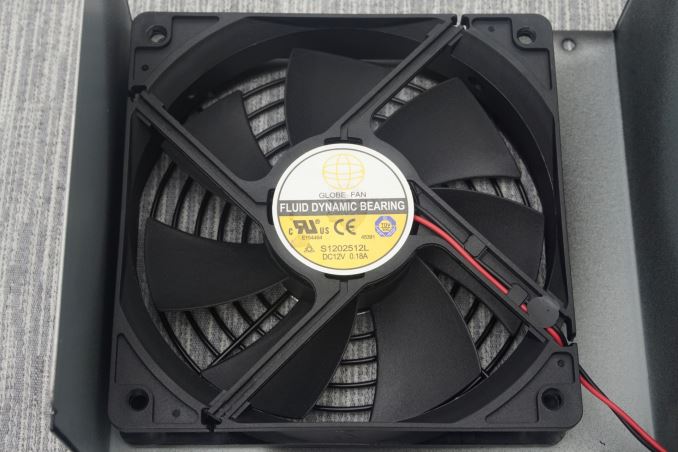














27 Comments
View All Comments
dreamcat4 - Saturday, April 9, 2016 - link
Hmm. and apparently "there is a silverstone expo tomorrow". Not sure what that means since was expecting shipping / stock movement instead. But can read more about it all over here --> https://hardforum.com/threads/silverstone-sx700-lp...Sn3akr - Monday, April 11, 2016 - link
For a HTPC with discrete GFX, this seems like a good idea.. We cut the cable a few years ago and went full streaming, and for our system, that also doubles as our "console" for family entertainment, i'd be intereested in something like this, since our system runs a lot of hours daily..nagi603 - Monday, April 11, 2016 - link
My first thought was "Does a 550W platinum PSU even need a fan?", as I'm a happy owner of a couple Seasonic X400's that can go up to 600W load, fanless. Then I noticed the price.Note to self: not all platinum modular PSUs are made equal.
tonyou - Monday, April 11, 2016 - link
According to the testing done here, this PSU at room temperature stayed fanless until around 400W so it probably doesn't need a fan most of the time in a cool running rig. That Seasonic X400 may have the hardware to run up to 600W fanless for a while but it probably doesn't meet Platinum efficiency at that power level.AbRASiON - Monday, April 11, 2016 - link
Can someone explain to me the difference with silver / gold / platinum PSUs?Is it simply more energy efficient? Or is it capable of actually outputting more juice or more consistent juice?
Why not just buy a 700w platinum? If the load requirement is only 300w of components, would a 700w platinum use more power than a 550w platinum?
Namisecond - Monday, April 11, 2016 - link
All power supplies have an efficiency curve with the highest efficiency around half to 3/4 full load. The better PSU manufacturers show you that curve on a graphic. The lowest efficiency will be under 20% load with the efficiency falling further the lower the load (and at the other end of the curve, falling a bit past 75% load).Under a 300W load, that 700W platinum PSU would probably use a little more power than that 550W. However, Under a 50 -100W load your gaming rig (idling while you surf the net) there may be a bigger difference in efficiency percentages.
cara smith - Friday, May 6, 2016 - link
I like the way you characterised the features of this product. I hope next month I am going to buy this awesome product. I am taking consideration of it very passionately. By the way Thanks for the review.